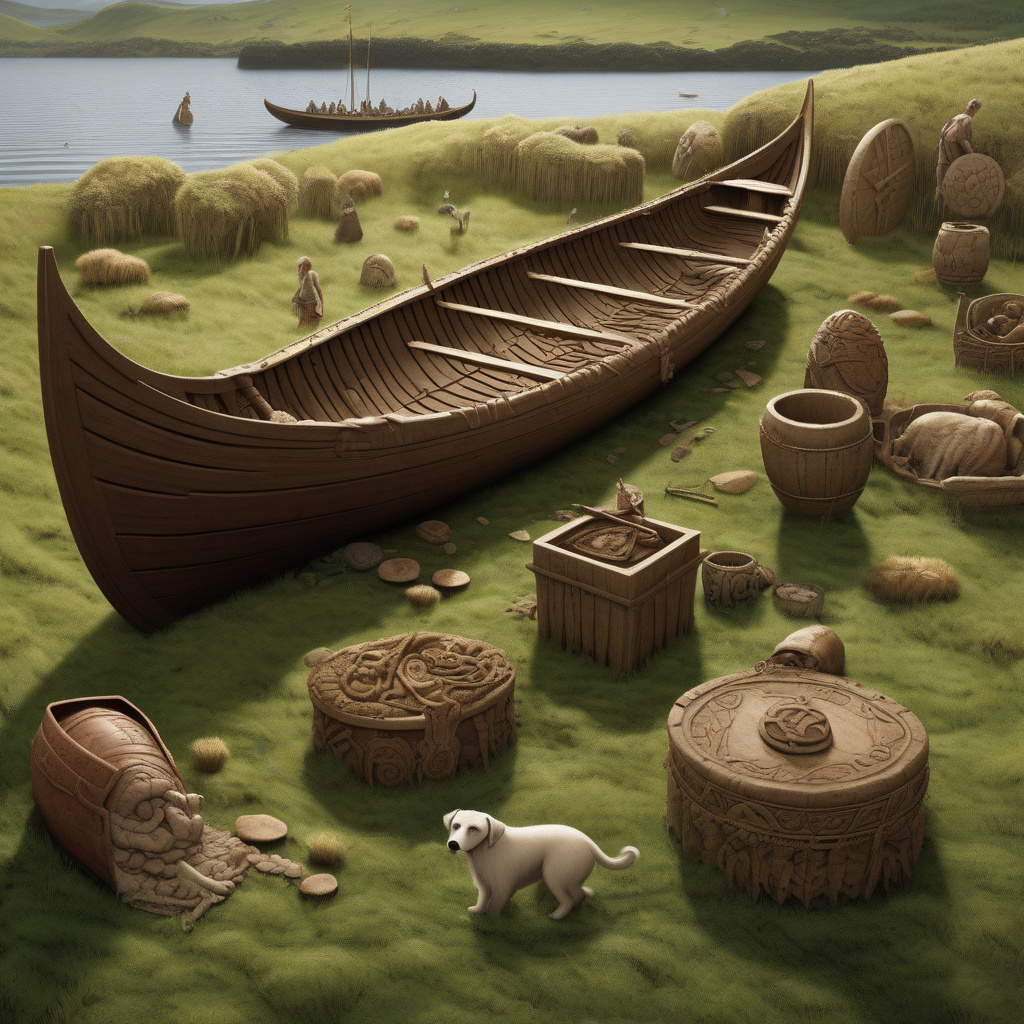Discovery of Viking Boat Burial Reveals Women’s Profound Connection with Companions, Even in Death
New evidence suggests that over 1,100 years ago, women shared a deep bond with their animal companions, transcending the boundaries of life and death. A recent discovery of a Viking boat burial in the Østfold County of Norway has shed light on the unique relationship between a woman and her canine companion during the Viking Age. This finding challenges traditional gender roles and showcases the important role that women played in Norse society, not only as caretakers and homemakers but also as valued companions to their animal friends.
The archaeological site, dated back to the 9th or 10th century, unveiled a remarkable scene of a woman laid to rest in a traditional boat burial alongside the remains of a large dog. The positioning of the woman and the dog in the grave suggests a symbolic and emotional connection between the two, indicating that they were not merely buried together by coincidence but rather as a deliberate and meaningful act. This discovery challenges previous assumptions that such burials were reserved solely for high-ranking male warriors, emphasizing the diversity and complexity of Viking funerary practices.
The presence of the dog in the burial site is particularly significant, as it highlights the importance of animals in Viking culture and their role as companions in life and beyond. Dogs were highly regarded in Norse society for their loyalty, protection, and companionship, often depicted in mythology and sagas as faithful and revered animals. The inclusion of the dog in the boat burial suggests that it held a special place in the woman’s life, possibly serving as a guardian and companion in both the physical and spiritual realms.
This discovery challenges the stereotypical image of Vikings as fierce warriors and pillagers, revealing a more nuanced and compassionate aspect of their culture. The bond between the woman and her dog transcends gender norms and speaks to the universal theme of companionship and loyalty that knows no bounds, not even in death. It offers a glimpse into the personal lives and relationships of individuals in the Viking Age, showcasing the emotional depth and complexity of their interactions with the natural world.
Furthermore, this finding underscores the importance of interdisciplinary research and archaeological investigations in uncovering hidden histories and untold stories from the past. By combining scientific analysis with historical context and cultural insights, researchers can piece together the puzzle of ancient civilizations and shed light on aspects of life that are often overlooked or misunderstood. The discovery of the Viking boat burial serves as a poignant reminder of the rich tapestry of human experience and the enduring bonds that connect us across time and space.
In conclusion, the recent discovery of the Viking boat burial in Norway offers a fascinating glimpse into the intimate relationship between a woman and her canine companion during the Viking Age. This finding challenges conventional notions of gender roles and highlights the emotional depth and complexity of human-animal connections in ancient societies. By unraveling the mysteries of the past, we gain a deeper understanding of our shared history and the enduring power of companionship, even in the face of mortality.
Viking, Boat Burial, Women, Companionship, Archaeology












